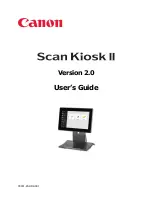
ConnectX®-2 VPI Single and Dual Port QSFP InfiniBand and Ethernet Adapter Card User Manual
Rev 1.6
Mellanox Technologies
41
low latency features. This includes reliable connected service, datagram service, RDMA and send/
receive semantics, atomic operations, user level multicast, user level I/O access, kernel bypass,
and zero copy.
ConnectX-2 with RoCE based network management is the same as that for any Ethernet and DCB-
based network management, eliminating the need for IT managers to learn new technologies.
4.6.1 Hardware and Software Requirements
Software:
Operating System
Mellanox OFED 1.5.1 or later
Hardware:
ConnectX-2 Adapter Card
To use RoCE you will need the following versions of firmware and software:
• OFED 1.5.1 or later
• firmware version 2.7.700 or later
4.6.2 Installation
For installation instructions visit:
www.mellanox.com
=> Support => Ethernet SW/Driver
4.7
Updating Adapter Card Firmware
Each card is shipped with the latest version of qualified firmware at the time of manufacturing.
Firmware is updated occasionally, and the most recent firmware can be obtained from:
=> Support => Download Center. Check that the firmware on your card is the latest found on the
Mellanox site, if not, update to the latest version found on the Mellanox website.
Firmware can be updated on the stand alone single card using the
flint
tool of the
Mellanox Firm-
ware Tools (MFT)
package. This package is available for download, along with its user manual,
from the Mellanox Firmware Tools page. See
http://www.mellanox.com
=> Support => Download
Center.
A firmware binaries table lists a binary file per adapter card. The file name of each such binary is
composed by combining the firmware name, the firmware release version, and the card part num-
ber. Please contact Mellanox System Support if you cannot find the firmware binary for your
adapter card.
The following steps describe how to retrieve the PSID (firmware identification) and programmed
firmware version of your adapter card. They also describe how to update the card with the latest
firmware version available.
1.
Retrieve the PSID and firmware version:
















































